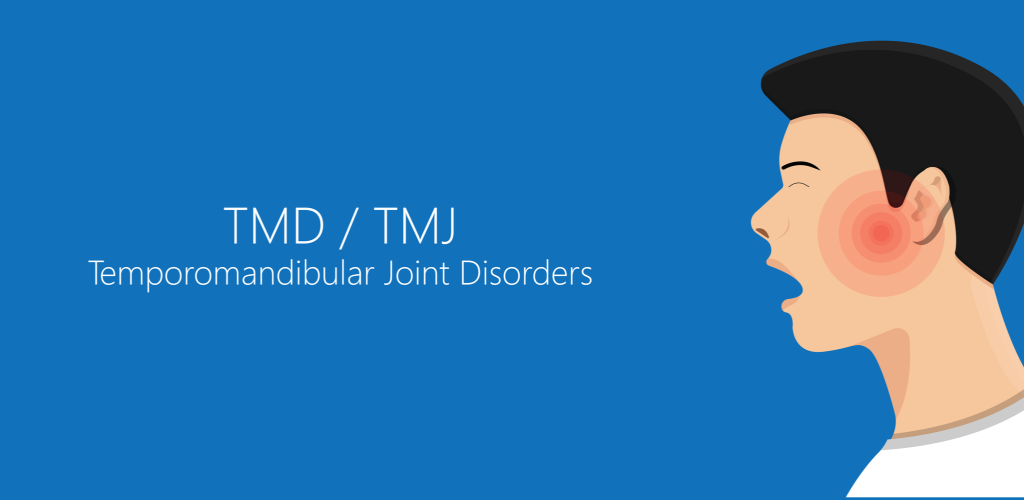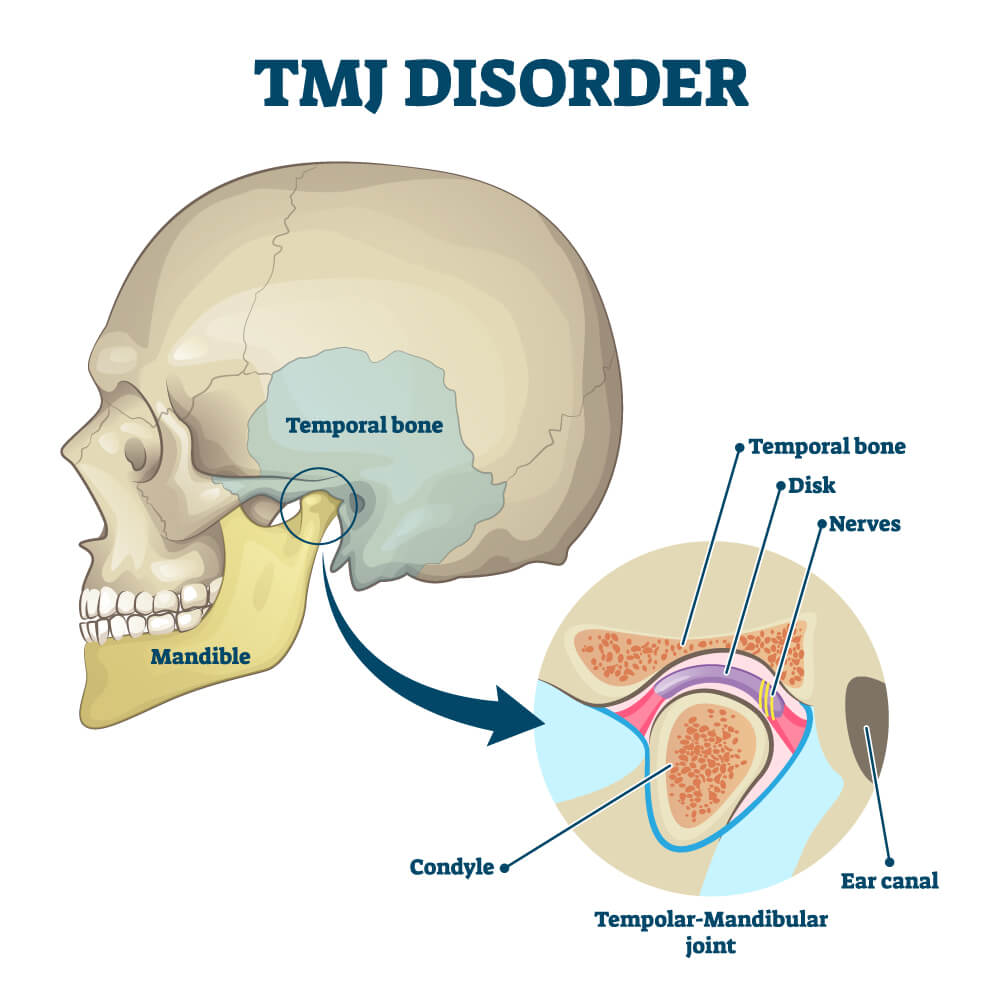TMJ Ruined My Face: Symptoms, Case Study & More
In the intricate framework of your body, the temporomandibular joint (TMJ) plays a pivotal role by connecting your jaw to your skull. Often associated with discomfort, this joint’s effects transcend mere pain. In this comprehensive exploration, we uncover the lesser-known repercussions of TMJ disorder on facial health and appearance.
Table of Contents
What is TMJ Disorder?
At the heart of this condition lies TMJ disorder, also referred to as TMD. Stress, jaw misalignment, and injuries are common triggers, leading to symptoms like jaw pain, clicks, headaches, and limited jaw mobility. However, this disorder’s consequences extend beyond these initial indicators, profoundly influencing facial health.
Symptoms of the Temporomandibular Joint (TMJ) Disorder
Temporomandibular joint (TMJ) disorder can arise from a variety of factors, often involving a combination of physical, behavioral, and anatomical influences. Here are some of the main reasons for TMJ disorder:
- Jaw Misalignment: When the jaw joint and surrounding muscles do not align properly, it can lead to excessive stress on the TMJ. This can be caused by genetic factors, trauma, or improper jaw development.
- Bruxism (Teeth Grinding and Clenching): Habitual teeth grinding and clenching can exert significant pressure on the TMJ and surrounding structures. This can result from stress, anxiety, or even a misaligned bite.
- Arthritis: Both osteoarthritis and rheumatoid arthritis can affect the TMJ. Arthritis causes inflammation in the joint, leading to pain, limited mobility, and potential changes in facial structure.
- Trauma: Accidents, injuries, or blows to the face can damage the TMJ or surrounding structures, leading to persistent discomfort and dysfunction.
- Stress: Chronic stress can cause individuals to clench their jaws, leading to muscle tension and potential TMJ problems.
- Malocclusion (Misaligned Bite): When the upper and lower teeth do not fit together properly, it can strain the TMJ and surrounding muscles, leading to pain and discomfort.
- Excessive Chewing or Gum Chewing: Habitually chewing gum, hard foods, or excessive chewing motions can strain the TMJ over time.
- Posture: Poor posture, especially in the neck and shoulders, can contribute to TMJ problems. It can alter the alignment of the jaw and increase muscle tension.
- Genetics: Some individuals may be genetically predisposed to developing TMJ disorders due to factors like joint structure and muscle function.
- Hormonal Changes: Hormonal fluctuations, especially in women, have been linked to increased sensitivity to pain, potentially exacerbating TMJ symptoms.
- Underlying Medical Conditions: Conditions like fibromyalgia, chronic fatigue syndrome, and connective tissue disorders can contribute to TMJ disorder.
- Excessive Phone Use: Holding a phone between your shoulder and ear or cradling it with your chin can strain the TMJ and surrounding muscles.
- Dental Procedures: Certain dental treatments or surgeries can inadvertently lead to TMJ issues, particularly if the jaw is held open for an extended period.
It’s important to note that TMJ disorder is often multifactorial, meaning that multiple factors can contribute to its development. Additionally, individual experiences can vary widely. If someone is experiencing symptoms of TMJ disorder, it’s advisable to consult a healthcare professional, such as a dentist or orthopedic specialist, to receive an accurate diagnosis and appropriate treatment recommendations based on their specific situation.

The Impact on Facial Appearance: Beyond the Jaw Pain
Look beyond the discomfort, and you’ll discover that TMJ disorder can reshape more than just your pain threshold. The misalignment of your TMJ can set off a domino effect, causing alterations in your bite, facial symmetry, and muscle tension. The implications go beyond discomfort—they can fundamentally reshape your facial structure, leading to changes in your bite pattern, sagging skin, and even a misaligned jawline.
Case Study – Experiences Shared By People
1: Mark’s Struggle with an Altered Smile – Mark, a 32-year-old professional, began noticing subtle changes in his appearance. His once-confident smile seemed different, and he felt self-conscious in social situations. After researching his symptoms, he discovered that his persistent jaw pain and shifting smile were linked to TMJ disorder. Through a combination of physical therapy and dental adjustments, Mark’s smile gradually regained its former charm, boosting his self-esteem.
2: Lisa’s Journey to Reclaiming Facial Symmetry – Lisa, a 28-year-old artist, found herself dealing with more than just jaw pain. Her once-symmetrical face began to show unevenness, affecting her artistic self-perception. With determination, Lisa consulted a TMJ specialist who identified her jaw misalignment as the cause. Months of exercises and orthodontic treatment improved her facial symmetry, allowing her to embrace her craft and appearance once again.
3: Alex’s Battle Against Facial Sagging – Alex, a 35-year-old fitness enthusiast, couldn’t understand why his face seemed to be sagging, despite his rigorous workout routine. After visiting a dentist, he learned that his TMJ disorder had led to muscle tension and altered jaw positioning, contributing to the sagging appearance. Following a comprehensive treatment plan involving physical therapy and bite correction, Alex not only regained his facial tone but also discovered a new sense of confidence.
4: Sarah’s Transformation Beyond Pain Relief – For years, Sarah, a 40-year-old mother of two, endured excruciating jaw pain that radiated through her face. Seeking relief, she visited a TMJ specialist who diagnosed her with severe TMJ disorder. As Sarah underwent treatment, she was surprised by the additional benefits—her facial features, once subtly imbalanced, started to realign, giving her a refreshed and more youthful appearance.
5: Ryan’s Journey from TMJ Struggles to a Radiant Smile – Ryan, a 25-year-old aspiring actor, faced an unexpected challenge on his path to stardom. Chronic headaches, jaw tension, and changes in his facial structure left him anxious about his appearance. Through consultations with both a dentist and an orthopedic specialist, Ryan discovered that his TMJ disorder was affecting not only his comfort but also his facial aesthetics. Committed to his treatment plan, Ryan regained his confident smile and pursued his dreams with newfound vigor.
Seeking Solutions: Managing TMJ Disorder and Its Effects
The path to resolution starts with an accurate diagnosis. Seek guidance from specialists in dentistry and orthopedics who can expertly tailor treatment options. These could range from lifestyle adjustments and physical therapy to orthodontic interventions or even surgical procedures. Each approach is meticulously customized to suit individual needs.
Preventive Measures and Self-Care: Maintaining Facial Health
Defending against TMJ disorder involves a holistic approach. Embrace stress management techniques, cultivate jaw-friendly exercises, prioritize proper posture, and nourish your body with a balanced diet. These steps not only shield against TMJ issues but also safeguard the harmonious integrity of your facial features.
Restoring Confidence: Addressing Facial Changes
For those who have grappled with TMJ disorder’s effects, there’s a journey to restore confidence. By investing in recommended treatments and diligently practicing prescribed exercises, individuals often experience enhancements in facial health. These transformations, both physical and emotional, culminate in newfound self-assurance.
Conclusion: Empowerment through Awareness and Action
Beyond its reputation as a source of jaw discomfort, TMJ disorder holds the power to alter your facial identity subtly. Armed with insights into the intricate link between TMJ and facial health, proactive intervention becomes paramount. Timely treatments and preventative strategies enable you to reclaim mastery over your physical well-being and self-assurance. As you navigate this journey, remember that the path to restoration lies in your hands.
FAQs About TMJ Ruined My Face
1. Can TMJ Disorder Truly Alter Facial Appearance?
Absolutely. Beyond its well-known symptoms, TMJ disorder can subtly transform your facial features due to its effect on jaw alignment and muscle tension.
2. What Visible Changes Can TMJ Disorder Trigger?
TMJ disorder can lead to a misaligned jawline, changes in bite, and even facial sagging, all of which contribute to an altered facial aesthetic.
3. How Does Jaw Misalignment Impact Facial Symmetry?
Jaw misalignment disrupts the delicate balance of facial symmetry, causing one side of the face to appear more prominent than the other.
4. Can TMJ Disorder Result in Skin Sagging or Jowls?
Yes, the muscle tension and jaw positioning associated with TMJ disorder can contribute to sagging skin along the jawline, resembling jowls.
5. How Does TMJ Disorder Affect the Bite?
TMJ disorder can shift the alignment of your teeth, affecting your bite. This can influence chewing, speech, and, consequently, facial appearance.
6. Can TMJ Disorder Influence My Smile?
Certainly. TMJ disorder’s impact on jaw alignment can lead to an altered smile, causing it to appear uneven or different from what you’re used to.
7. Can Treating TMJ Disorder Improve Facial Appearance?
Indeed. Effective treatment options like orthodontic adjustments, physical therapy, or surgery can realign the jaw, alleviate muscle tension, and restore facial harmony.
8. Do Facial Changes Due to TMJ Disorder Affect Self-Esteem?
Absolutely. Individuals often experience a dip in self-esteem and confidence due to the pronounced facial changes caused by untreated TMJ disorder.
9. Is Facial Alteration a Common TMJ Disorder Symptom?
While not universal, facial changes are a potential outcome of untreated TMJ disorder, particularly when left unmanaged.
10. Can TMJ Disorder Gradually Reshape the Jawline?
Yes, the persistent effects of jaw misalignment and muscle tension linked to TMJ disorder can gradually alter the contours and definition of your jawline.

